
| Starting price | $16/mo |
|---|---|
| Pricing model | Subscriber based |
| Free Trial | 14-day |
| Free Version | Yes |
Discover our carefully compiled list of the best CRM software solutions. Our top picks represent the most valuable options on the market, backed by extensive research. Find the best value CRM software that will drive your business forward.

| Starting price | $16/mo |
|---|---|
| Pricing model | Subscriber based |
| Free Trial | 14-day |
| Free Version | Yes |
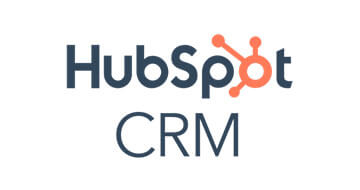
| Starting price | $20/mo |
|---|---|
| Pricing model | Tiered |
| Free Trial | 14-days |
| Free Version | Free (lite) version |
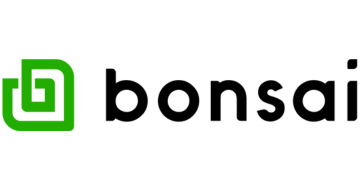
| Starting price | $17/month |
|---|---|
| Pricing model | Per User |
| Free Trial | Yes |
| Free Version | No |
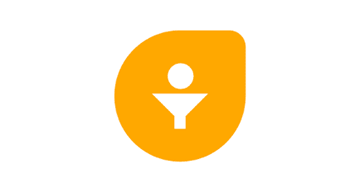
| Starting price | $18/mo |
|---|---|
| Pricing model | Per-user |
| Free Trial | 21-day |
| Free Version | Yes |
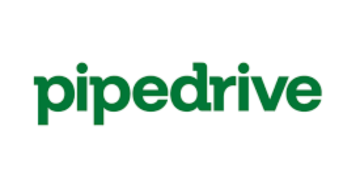
| Starting price | $15/mo |
|---|---|
| Pricing model | Per User |
| Free Trial | 14-day |
| Free Version | No |

| Starting price | $9/mo |
|---|---|
| Pricing model | Per User |
| Free Trial | No |
| Free Version | Yes |
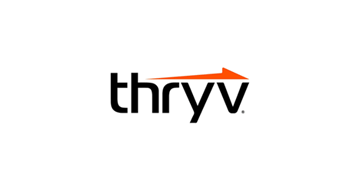
| Starting price | Quote only |
|---|---|
| Pricing model | User-based |
| Free Trial | 7-day |
| Free Version | No |
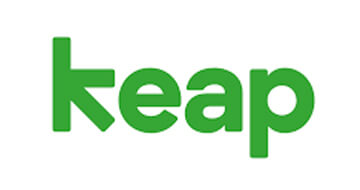
| Starting Price | $40/mo |
|---|---|
| Pricing Model | Subscriber based |
| Free Trial | 14-day |
| Free Version | No |
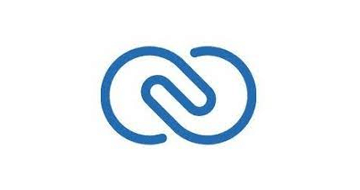
| Starting price | $14/user/month |
|---|---|
| Pricing model | Tiered per user |
| Free Trial | 15-day |
| Free Version | Yes (3 users) |
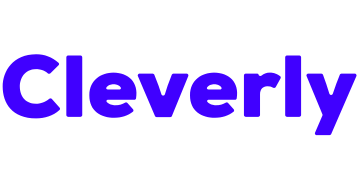
| Starting Price | $297/ month |
|---|---|
| Pricing Model | Subscriber based, Quotation based |
| Free Trial | No |
| Free Version | No |
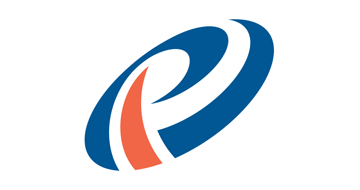
| Starting price | $65/mo |
|---|---|
| Pricing model | Per User |
| Free Trial | 14-day |
| Free Version | Yes |
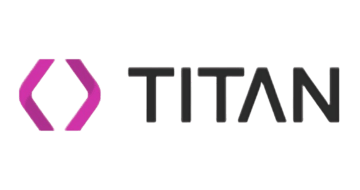
| Pricing Model | Per user |
|---|---|
| Free Version | No |
| Free Trial | Yes |

| Starting price | $29/mo |
|---|---|
| Pricing model | Per User |
| Free Trial | 14-day |
| Free Version | No |

| Starting price | $18/mo |
|---|---|
| Pricing model | Per User |
| Free Trial | 21-day |
| Free Version | Yes |
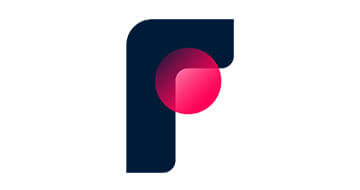
| Starting price | $19/mo |
|---|---|
| Pricing model | Per User |
| Free Trial | Yes (upon request) |
| Free Version | No |
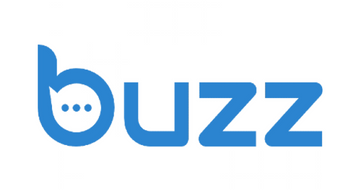
| Starting Price | US$95 per month |
|---|---|
| Pricing Model | Tiered Pricing |
| Free Trial | No |
| Free Version | No |
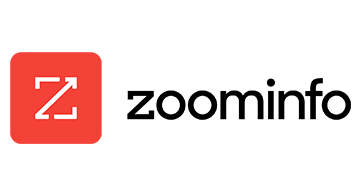
| Starting Price | Contact ZoomInfo for a quote |
|---|---|
| Pricing Model | Quotation based |
| Free Trial | Yes |
| Free Version | No |
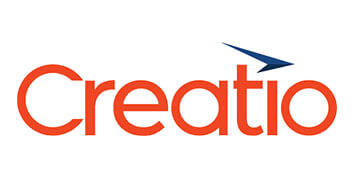
| Starting price | $25/mo |
|---|---|
| Pricing model | Per User |
| Free Trial | 14-day |
| Free Version | No |
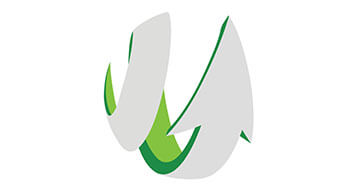
| Starting Price | $399/month |
|---|---|
| Pricing Model | Usage-based |
| Free Trial | 14-day |
| Free Version | No |
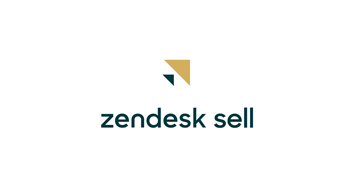
| Starting Price | $19 per month |
|---|---|
| Pricing model | Per User |
| Free Trial | 14 days |
| Free Version | No |
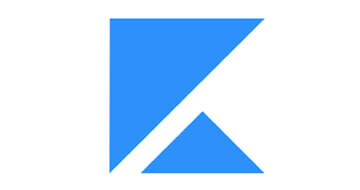
| Starting price | $149/mo |
|---|---|
| Pricing model | Per User |
| Free Trial | 14-day |
| Free Version | No |
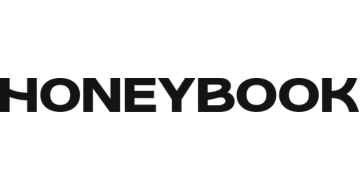
| Starting Price | $39/month (sales tax excluded) |
|---|---|
| Pricing Model | Subscriber based |
| Free Trial | No |
| Free Version | No |

| Starting price | $9.80/mo |
|---|---|
| Pricing model | Per User |
| Free Trial | 14-day |
| Free Version | Yes |
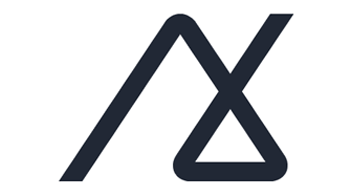
| Starting Price | $19/mo |
|---|---|
| Pricing Model | Per User |
| Free Trial | Yes |
| Free Version | No |
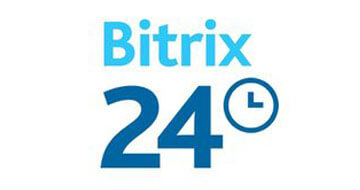
| Starting Price | $49/mo |
|---|---|
| Pricing Model | Per Team |
| Free Trial | 30-days |
| Free Version | Yes |
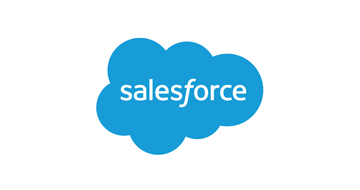
| Starting price | $25/user/month (billed annually) |
|---|---|
| Pricing model | Per User |
| Free Trial | 14-day |
| Free Version | No |
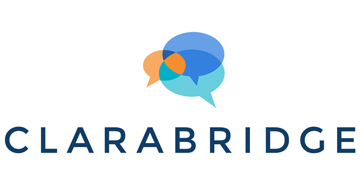
| Starting Price | Contact for price |
|---|---|
| Pricing Model | Quotation based |
| Free Trial | No |
| Free Version | No |
Customer relationship management is a sales software that helps manage all your company’s interactions and relationships with its customers or potential customers. Its goal is to improve business relationships and help you grow your company. It provides many services and helps you stay connected to your customers. The best CRM tools also help streamline processes and improve profitability.
A CRM system will prove itself useful in many fields, including contact and sales management, agent productivity, and more. Customer Relationship Management software programs are used in different industries and fields such as the retail industry, banking, hospitality sections, financial services, insurance, consulting, agriculture, and more.
Such tools can be used to manage relationships across the entire customer lifecycle. This includes sales, marketing, digital commerce, and customer service interactions. Customer Relationship Management software programs are one of the largest enterprise application software programs. The worldwide spend is expected to reach more than USD $114.4 billion by the year 2027.
Understanding the different types of CRM systems helps you choose the right solution for your business needs. Each type serves distinct purposes and offers unique capabilities.
Operational CRM focuses on automating customer-facing business processes. It streamlines sales automation, marketing automation, and service automation. This type helps your team manage day-to-day customer interactions efficiently. Sales teams use operational CRM to track leads through the pipeline, while marketing teams leverage it to execute campaigns and nurture prospects.
Analytical CRM specializes in examining customer data to provide actionable insights. It collects information from multiple touchpoints and analyzes patterns in customer behavior. This intelligence helps businesses make data-driven decisions about product development, pricing strategies, and market positioning. Companies use analytical CRM to identify their most profitable customer segments and predict future trends.
Collaborative CRM breaks down silos between departments by enabling information sharing across sales, marketing, and customer service teams. It ensures everyone accesses the same customer data, creating a unified experience. This type proves particularly valuable for organizations with distributed teams or multiple customer touchpoints. When your support team knows what sales promised, they can deliver better service.
Artificial intelligence has transformed how businesses manage customer relationships. AI sales software brings unprecedented efficiency and intelligence to CRM platforms.
AI-powered CRM systems analyze massive datasets to predict customer behavior, automate routine tasks, and personalize interactions at scale. These intelligent platforms can identify which leads are most likely to convert, recommend the best next action for sales reps, and even draft personalized email responses.
| AI Feature | Business Impact | Use Case Example |
|---|---|---|
| Predictive Lead Scoring | Prioritizes high-value prospects automatically | Identifies leads with 80%+ conversion probability |
| Chatbots & Virtual Assistants | Provides 24/7 customer support | Answers common questions, schedules meetings instantly |
| Sales Forecasting | Improves revenue predictions by 20-30% | Projects quarterly sales with historical data analysis |
| Sentiment Analysis | Detects customer satisfaction in real-time | Flags at-risk accounts before churn occurs |
| Automated Data Entry | Saves 5-10 hours per rep weekly | Captures meeting notes, updates fields automatically |
| Next Best Action Recommendations | Increases win rates by suggesting optimal moves | Suggests when to follow up, what to offer |
| Email Intelligence | Tracks open rates, engagement patterns | Determines best send times, subject line effectiveness |
| Conversation Intelligence | Analyzes sales calls for coaching opportunities | Identifies successful talk tracks, objection patterns |
Most top CRM companies now integrate AI capabilities as standard features rather than expensive add-ons. Platforms like Salesforce Einstein, HubSpot AI, and Zoho Zia demonstrate how AI can transform customer relationship management from reactive to proactive.
Of course, for every company, the biggest assets are its customers. That’s why a tool that allows you to manage an effective relationship with them is a must. However, CRM software programs are also widely used for interactions with colleagues, suppliers, B2B partners, etc. A customer relationship management system can help you to:
Make improvements: This software can produce real results like direct improvements to the bottom line.
Categorize leads: It can help you identify new leads easily and categorize them accurately.
Increase referrals: If you understand your customers better, you will start winning new business from existing customers.
Offer better customer service: Through such systems, you can provide high-quality and fast customer support to your clients.
Improve your products: A great system will gather information from different sources and give you insights about your customers’ feedback, so you can improve what you offer them.
We have developed a detailed rating methodology to evaluate CRM software based on four key categories: price, ease of use, features, and support. Each software is given an individual score, called a Genius Score, which ranges from 0 to 100, with 100 being the highest score. The Genius Score is determined by a combination of existing external reviews and extensive internal testing by our team. You can learn more about our scoring methodology on our scoring methodology page.
There may be many more options that could easily be added to this checklist, but these are the most important features that the best Customer Relationship Management tools should offer.
Improved customer service: Allows more effective communication with your customer base.
Third-party integration: You can connect your software to other solutions to save time and money. Many CRM programs offer third-party integrations.
Workflow automation: Through this tool, your sales team can send automated reminders to clients, marketing emails to customers and. Order processing, order tracking, inventory control, and more can be automated.
Customization: CRM software allows the personalization of emails. It gives you access to all technical specs.
Real-time data: The best CRM programs can pull real-time data from apps and devices, so they can help you make better marketing decisions.
Sales forecasting: A CRM tool can predict your future sales based on previous or current data. Based on the sales forecast, you may have to alter your marketing plan.
Modern professionals need access to customer information wherever they work. Mobile CRM has evolved from a nice-to-have feature to an essential requirement for sales and marketing teams.
Leading mobile CRM applications offer offline access, allowing reps to view customer data and update records without internet connectivity. Once reconnected, the system syncs changes automatically. Voice-to-text functionality enables quick note-taking during or immediately after customer meetings. Push notifications alert team members about important updates, task deadlines, or new leads requiring immediate attention.
GPS integration helps sales reps identify nearby prospects, optimize travel routes, and check in at customer locations. Some advanced systems trigger automated workflows based on geographic proximity. When a rep enters a specific area, the CRM might surface relevant accounts in that region or suggest nearby opportunities worth visiting.
The best mobile CRM interfaces adapt seamlessly to smaller screens without sacrificing functionality. Touch-optimized navigation, swipe gestures, and simplified data entry make mobile work feel natural rather than cumbersome. Progressive web apps (PWAs) eliminate the need for separate app downloads while delivering native-like experiences.
The biggest advantage of using such a tool as a business is simply being able to view all the data together in a concise and relevant manner. All the best CRM tools will allow you to do this in some way or another.
Furthermore, a good tool will allow you to perform intelligent searches on your database. For example, one use of this type of system would be to find all the clients with whom there has been no communication in a certain amount of time, say, a month or more. Learn more about its numerous benefits.
As was briefly mentioned above, these kinds of tools have several amazing uses as far as monitoring your outreach and marketing processes go. The most basic and obvious of these is sending out mass emails that are still customized based on specific users’ information.
A CRM system has the ability to automate manual, repetitive tasks to improve productivity and streamline work. Automation can encompass a range of functions across sales, service activities, and marketing. Sales force automation software integrates directly with CRM platforms to eliminate tedious administrative work.
Perhaps one of the most powerful benefits that a quality piece of software can provide you and your business with is the data analysis tools. These grow in potential as more and more data is harvested and collated by the software within the database.
As things move forward with your business, a customer relationship management software program can often provide valuable insight into the best and/or most viable marketing strategies to use with different customers. It can also help you decide how to segment your customers properly for maximum effect. The best software will do this by using pattern recognition algorithms or other tools that are similar in nature.
Different industries face unique challenges that generic CRM systems struggle to address. Industry-specific CRM platforms deliver tailored features that align with sector-specific workflows and compliance requirements.
Healthcare providers require HIPAA-compliant systems that protect patient privacy while managing relationships. These CRMs integrate with electronic health records (EHR), handle appointment scheduling, and track patient communication histories. Features include medication reminders, telehealth integration, and referral management.
Real estate professionals need property listing management, open house scheduling, and transaction pipeline tracking. The best real estate CRMs offer MLS integration, automated property matching based on buyer preferences, and commission tracking. Mobile capabilities prove essential for agents working in the field.
Banks, insurance companies, and investment firms require robust security features and regulatory compliance tools. These CRMs manage complex product portfolios, track client investment preferences, and automate compliance documentation. Integration with financial planning tools and document management systems proves critical.
Retail-focused CRMs emphasize customer behavior tracking, purchase history analysis, and loyalty program management. They integrate with point-of-sale systems, inventory management, and e-commerce platforms. Features include customer segmentation for targeted promotions and abandoned cart recovery automation.
Manufacturers need CRMs that handle long sales cycles, complex quoting processes, and distributor management. These systems integrate with ERP platforms, manage bill-of-materials, and track warranty claims. Configuration tools help sales teams quote custom products accurately.
In general, it’s a good idea to look for a tool that has multiple options for importing and working with existing data. As a bare minimum, it should accept imports in .csv format, as well as .xls and similar. This depends a lot on how much information your business already has stored up, naturally.
The import tool can detect your type of data information and offer you matching options. The Data Import Tool lets you update you upload new records or put existing data into your system.
The basic metric for how one could measure the ease of use of any tool of this type would be how quickly you can search for and find the data you are looking for in any given situation. A good tool focuses on good visualization of data, allowing you to find whatever you may be looking for in mere seconds, not minutes, and the best CRM systems do that.
Tools that are easy and straightforward to use will help make your team’s workflow simpler and frustration-free. An easy-to-use program is crucial for your team’s overall job satisfaction because it helps them focus on what’s most important like clients and contacts.
No CRM operates in isolation. The strength of a CRM platform often depends on how well it connects with your existing technology stack.
Email & calendar integration remains foundational. Seamless syncing with Gmail, Outlook, and Office 365 ensures communication happens within familiar interfaces while automatically logging interactions in the CRM.
Marketing automation platforms like HubSpot, Marketo, and Mailchimp connect lead generation efforts with sales follow-up. When marketing identifies hot leads, the CRM immediately notifies sales teams to engage.
E-commerce platforms including Shopify, WooCommerce, and Magento feed purchase data directly into customer records. Sales teams see complete buying histories and can recommend complementary products.
Accounting and finance software like QuickBooks, Xero, and Sage synchronize payment information, invoice status, and customer credit limits. This integration prevents awkward situations where sales promises what finance cannot deliver.
Project management tools such as Asana, Trello, and Monday.com link customer projects with account records. Teams track deliverables, timelines, and customer satisfaction within a unified system.
Communication platforms including Slack, Microsoft Teams, and Zoom enable instant collaboration. Sales reps can pull customer data into team channels and schedule video calls directly from CRM records.
Some pieces of software will rely on plugins and/or extensions of some sort to add functionality on a more à la carte basis. Often, these plugins will be supplied by not only the company producing the main software but by third parties as well. The most popular tools or platforms often have a mind-boggling array of these add-ons available.
Often, a company’s perfect situation may be brought about by adding the right add-ons to the right CRM tool to get the feature set that is desired by that company. This may very well be the case for your company as well. The CRM software cost may be linked to the number of add-ons it provides.
The process of customer segmentation means dividing a market into customer groups that share similar features. The segmentation allows a company to understand better which customers are the most profitable, so they can determine how to market to them.
A consumer’s lifecycle can be analyzed from knowing their purchase history and what is likely that they will spend in the future. The best CRM tools allow you to sort contacts by collecting data about them. It might filter by location, deal stage, or company size. This way, your team will always have a clear idea of how to outreach each segment.
Custom relationship management tools will ensure that your team communication is facilitated. To maintain a good brand image, communication is crucial among all representatives who are interacting with prospects. A company has also to ensure that representatives of the company are learning from each other and are working together to reach their quota.
Customer relationship management software allows your team to tag representatives and managers on specific deals they want them to bring onto. You can also use the tool to reassign specific leads. Also, members don’t need to leave the system if they want to send emails to other team members to have these kinds of discussions because all communications can be facilitated in an easy way from within the tool.
As customer data becomes increasingly valuable and regulations more stringent, CRM security cannot be an afterthought.
Encryption protects data both in transit and at rest. Leading CRMs employ bank-level encryption standards, ensuring customer information remains secure even if physical servers are compromised.
Multi-factor authentication (MFA) adds an essential security layer beyond passwords. Requiring a second verification method dramatically reduces unauthorized access risks.
Role-based access controls limit what users see based on their responsibilities. Sales reps access prospect information, while executives view company-wide analytics. This principle of least privilege minimizes internal security risks.
Audit trails track every action within the system—who accessed what data, when changes occurred, and what modifications were made. These logs prove invaluable for compliance audits and security investigations.
GDPR requirements demand that businesses obtain explicit consent before processing personal data, provide data portability, and honor deletion requests. Your CRM must facilitate these obligations through consent tracking, data export functionality, and secure deletion capabilities.
HIPAA compliance for healthcare organizations requires specific security measures, business associate agreements, and breach notification procedures. Healthcare-specific CRMs build these requirements into their core functionality.
SOC 2 certification demonstrates that a CRM vendor maintains rigorous security controls around availability, confidentiality, and privacy. This third-party validation provides assurance for enterprises handling sensitive data.
Choosing the right CRM represents only half the battle. Successful implementation determines whether your investment delivers returns or becomes expensive shelfware.
Define clear objectives before evaluating platforms. Are you primarily solving lead management issues? Seeking better sales forecasting? Improving customer service response times? Specific goals guide vendor selection and configuration decisions.
Map existing workflows in detail. Document how leads currently flow through your organization, where bottlenecks occur, and which processes work well. This mapping reveals which workflows to preserve and which to redesign.
Identify key stakeholders early. Sales, marketing, customer service, and IT all have perspectives worth considering. Their input during selection prevents the implementation team from choosing features the broader organization won’t adopt.
Data cleansing before migration prevents “garbage in, garbage out” scenarios. Deduplicate records, standardize formatting, and archive obsolete information. Clean data makes new systems useful immediately rather than after months of cleanup.
Phased rollouts reduce risk compared to big-bang implementations. Start with a pilot team, gather feedback, refine processes, then expand gradually. This approach identifies problems while they’re still manageable.
Training programs must address different user types. Power users need comprehensive technical training, while occasional users require simplified quick-start guides. Role-specific training demonstrates how the CRM solves each team member’s specific challenges.
Executive sponsorship signals organizational commitment. When leadership actively uses the CRM and references it in meetings, adoption accelerates throughout the organization.
Celebrate early wins publicly. Share stories of how the CRM helped close a deal, resolved a customer issue, or identified an opportunity. These success stories motivate teams more effectively than mandates.
Address resistance directly rather than ignoring it. Some team members will resist new systems regardless of their benefits. Understanding their concerns—fear of technology, comfort with existing methods, or skepticism about ROI—allows you to provide targeted support.
No matter your company’s size, a Customer Relationship Management tool is always useful to any business type. Evidently, not every tool can work for your company because they are developed to fulfill the needs of specific company sizes. But it is possible for you to find a tool type that fits your requirements. They all have their differences and often take diametrically different approaches to how they do their work and take care of the same tasks. That’s why it’s best for your company to stay using software that fits your size and needs.
There are some differences between enterprise systems and smaller ones. Most of these differences come from the complexity of running a huge organization compared to running a smaller size one.
An enterprise system is tailored to big-size companies with more needs. These organizations often have multiple teams and even departments, and all of them are relying on instant access to the company’s data. Enterprise CRM tools allow a higher level of automation, such as solving supply chain challenges or logging customer interactions.
Finding good CRM software for small businesses is not hard as there are plenty for SMEs too. Unlike larger enterprises that have huge resources, SMEs are looking for solutions through the software as a service model. Such businesses are pushing the industry to offer more customizable and scalable solution sets that can readily address their growth plans and quickly evolving requirements.
When evaluating CRM solutions, several platforms consistently rank among the best options for different business needs:
Salesforce CRM dominates the enterprise market with comprehensive features, extensive customization, and a massive app ecosystem. Its power comes with complexity, making it ideal for larger organizations with dedicated administrators.
HubSpot CRM offers an excellent free tier and scales affordably for growing businesses. Its intuitive interface and marketing automation integration make it perfect for companies prioritizing inbound marketing strategies.
Close CRM focuses on inside sales teams that rely heavily on calling and email outreach. Its communication-first design helps SDRs and BDRs maximize productivity.
Freshworks provides AI-powered features at mid-market pricing. Companies seeking modern capabilities without enterprise price tags find strong value here.
These represent just a fraction of available options. Explore our comprehensive best value CRM software guide for detailed comparisons.
There are different pricing models for CRM tools. These pricing models include: per user, per month pricing, volume-based pricing, etc. The larger the business, the more it will pay for implementing this tool.
| Business Size | User Count | Average Implementation Cost |
|---|---|---|
| Small Business | <20 users | $10,000 – $18,000 |
| Mid-Market | 21-100 users | $25,000 – $150,000 |
| Enterprise | 100+ users | $150,000 – $350,000+ |
For small businesses with fewer than 20 users, the average implementation cost is between $10,000 and $18,000. For mid-market businesses with 21 to 100 users, the average implementation cost is between $25,000 and $150,000. And, for enterprise businesses with more than 100 users, the implementation cost is between $150,000 to $350,000.
It is important to factor in this CRM software cost into any business plan. Beyond initial implementation, consider ongoing costs including per-user subscription fees, storage overages, premium features, integration costs, training expenses, and support contracts.
Quantifying CRM value helps justify investment and identify improvement opportunities.
Sales cycle length measures how quickly deals progress from first contact to closed-won. Effective CRM usage typically reduces sales cycles by 8-14% through better lead qualification and automated follow-ups.
Win rate percentages reveal how many opportunities convert to customers. CRM data helps identify characteristics of successful deals, allowing sales teams to pursue similar prospects.
Customer lifetime value (CLV) calculations become more accurate with comprehensive purchase history and engagement data. Understanding CLV helps prioritize high-value customer segments.
Customer acquisition cost (CAC) should decrease as CRM improves efficiency. When sales teams close more deals in less time, the cost of acquiring each customer drops.
Customer retention rates improve when service teams access complete interaction histories. Reducing churn by even 5% can increase profitability by 25-95% depending on your industry.
Pipeline velocity shows how quickly deals move through stages. Stagnant opportunities require intervention before they become lost causes.
Lead response time tracks how quickly sales teams engage new prospects. Research shows the odds of qualifying a lead decrease by 80% if response time exceeds five minutes.
Activity metrics including calls made, emails sent, and meetings scheduled indicate whether reps are executing fundamental behaviors. Low activity often precedes poor results.
Forecast accuracy measures how well projected revenue aligns with actual results. Accurate forecasting enables better resource planning and realistic goal-setting.
The CRM landscape continues evolving rapidly. Forward-thinking organizations monitor emerging trends to maintain competitive advantages.
Voice-activated CRM access allows hands-free operation during driving or multitasking. Natural language queries like “Show me my top accounts in Chicago” eliminate menu navigation.
AI algorithms identify at-risk accounts months before cancellation by analyzing usage patterns, support ticket frequency, and engagement metrics. Proactive intervention prevents churn.
Distributed ledger technology could revolutionize how customer consent and data provenance are tracked. Immutable audit trails ensure compliance and build customer trust.
Virtual reality product demonstrations and augmented reality try-before-you-buy experiences integrate with CRM data. Sales teams access customer preferences while conducting immersive presentations.
Connected devices generate real-time usage data that flows into CRM records. Equipment manufacturers know when customers need parts or service before breakdowns occur.